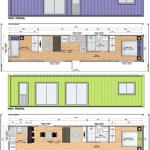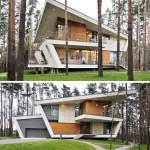Minimalist House Plans are architectural designs that prioritize simplicity, functionality, and space optimization. They embrace the “less is more” philosophy, focusing on creating open, airy, and uncluttered living spaces. A prime example of a minimalist house plan is the “Tiny House” movement, where compact, mobile homes aim to minimize environmental impact and promote sustainable living.
The benefits of minimalist house plans extend beyond aesthetics. They reduce construction and maintenance costs, maximize natural light and ventilation, and promote a sense of well-being by eliminating clutter and distractions. By embracing minimalism, homeowners can enjoy a more streamlined, efficient, and fulfilling living environment.
In this article, we will delve into the key elements of minimalist house plans, explore their advantages and disadvantages, and provide inspiring examples of homes that embody the minimalist aesthetic. We will also discuss the practical considerations and challenges involved in designing and building a minimalist house, helping you make informed decisions about your next home.
Minimalist house plans prioritize simplicity and functionality, creating open, airy, and uncluttered living spaces.
- Open floor plans
- Natural light and ventilation
- Decluttered spaces
- Sustainable materials
- Energy efficiency
- Reduced maintenance
- Cost savings
- Improved well-being
By embracing these elements, minimalist house plans offer a streamlined, efficient, and fulfilling living environment.
Open floor plans
Open floor plans are a defining characteristic of minimalist house plans. They eliminate traditional walls and partitions, creating large, open spaces that flow seamlessly from one area to another. This design approach promotes a sense of spaciousness and fosters a feeling of connection between different parts of the home.
Open floor plans maximize natural light and ventilation, as there are no walls to obstruct the flow of air and sunlight. This creates a bright and airy living environment that reduces the need for artificial lighting and heating/cooling systems. Additionally, open floor plans allow for greater flexibility in furniture placement and room usage, enabling homeowners to customize their space to meet their changing needs.
One of the key advantages of open floor plans is their ability to enhance social interaction and family bonding. By eliminating physical barriers, family members and guests can easily connect and engage with each other, fostering a sense of community and togetherness. Open floor plans also promote a more active lifestyle, as there is ample space for movement and activities such as playing, exercising, or entertaining.
While open floor plans offer numerous benefits, it’s important to consider their potential drawbacks as well. One challenge is the lack of privacy, as there are no separate rooms for quiet retreat or solitude. Additionally, open floor plans can be more difficult to heat and cool efficiently, as there is a larger volume of space to regulate. However, with careful planning and design, these challenges can be mitigated, allowing homeowners to enjoy the full benefits of an open floor plan.
Natural light and ventilation
Natural light and ventilation are essential elements of minimalist house plans. By incorporating large windows, skylights, and other openings into the design, architects can create homes that are filled with natural light and fresh air.
Natural light has numerous benefits for both physical and mental well-being. It helps regulate the body’s circadian rhythm, improves mood and cognitive function, and reduces eyestrain. Additionally, natural light can help to reduce energy consumption by reducing the need for artificial lighting during the day.
Ventilation is equally important for maintaining a healthy indoor environment. Fresh air helps to remove pollutants, reduce humidity, and prevent the growth of mold and mildew. Proper ventilation can also help to reduce the risk of respiratory problems and improve overall air quality.
In minimalist house plans, natural light and ventilation are often achieved through the use of open floor plans and large windows. Open floor plans allow for the free flow of air and light throughout the home, while large windows provide ample natural lighting. Additionally, skylights and other architectural features can be used to bring natural light into darker areas of the home, such as hallways and bathrooms.
By carefully considering the placement and size of windows, architects can create minimalist homes that are both energy-efficient and filled with natural light and fresh air. This not only enhances the aesthetic appeal of the home but also promotes a healthy and comfortable living environment.
Decluttered spaces
Decluttered spaces are a hallmark of minimalist house plans. Minimalism, as a design philosophy, emphasizes the importance of reducing clutter and possessions to create a sense of spaciousness, peace, and well-being. In minimalist homes, every item has a purpose and a designated place, eliminating unnecessary belongings that can create visual noise and mental distractions.
Decluttering a home involves removing anything that is not essential or does not bring joy to the homeowner. This can include excessive furniture, decorative items, paperwork, clothing, and other miscellaneous items that accumulate over time. By paring down possessions to the bare minimum, homeowners can create a more serene and organized living environment.
Decluttered spaces offer numerous benefits beyond aesthetics. They reduce dust and allergens, making them ideal for individuals with allergies or respiratory problems. Additionally, decluttered spaces are easier to clean and maintain, freeing up valuable time and energy. Furthermore, when there is less clutter to distract the eye, individuals can focus better and experience a sense of calm and tranquility.
Achieving decluttered spaces requires a combination of regular maintenance and conscious decision-making. Homeowners should make a habit of regularly decluttering and purging items they no longer need or use. Additionally, they should be mindful of new purchases and only bring items into their home that are truly necessary and bring value to their lives. By embracing a minimalist mindset and adopting habits that promote decluttering, homeowners can create and maintain spaces that are both aesthetically pleasing and conducive to well-being.
Decluttered spaces are not only visually appealing but also provide numerous practical and psychological benefits. By reducing clutter, homeowners can create a more serene, organized, and healthy living environment that promotes well-being and productivity.
Sustainable materials
Sustainable materials play a crucial role in minimalist house plans, which prioritize environmental consciousness and resource conservation.
- Recycled and reclaimed materials:
Using recycled or reclaimed materials reduces the demand for new resources and helps to divert waste from landfills. Common examples include reclaimed wood, recycled glass countertops, and salvaged bricks. - Renewable and biodegradable materials:
Renewable materials, such as bamboo, cork, and rapidly renewable timber, can be replenished naturally, reducing the environmental impact of construction. Biodegradable materials, like cellulose insulation and straw bales, decompose naturally, minimizing waste. - Low-VOC and non-toxic materials:
Volatile organic compounds (VOCs) are harmful chemicals found in many building materials, paints, and finishes. Choosing low-VOC or non-toxic alternatives helps to improve indoor air quality and reduce the risk of health problems. - Locally sourced materials:
Using locally sourced materials reduces transportation distances, lowers carbon emissions, and supports local businesses. It also helps to preserve the character and identity of the surrounding community.
By incorporating sustainable materials into minimalist house plans, architects and homeowners can create homes that are not only aesthetically pleasing but also environmentally responsible. Sustainable materials promote a healthier indoor environment, reduce the carbon footprint of construction, and contribute to a more sustainable future.
Energy efficiency
Energy efficiency is a key consideration in minimalist house plans, as it reduces operating costs, minimizes environmental impact, and enhances overall comfort.
Passive design strategies:
Passive design techniques harness natural elements to reduce energy consumption. This includes optimizing building orientation to maximize solar gain in winter and minimize it in summer, designing overhangs to provide shade during warm months, and incorporating natural ventilation to minimize the need for air conditioning.
Efficient building envelope:
The building envelope, which includes the walls, roof, and foundation, plays a crucial role in energy efficiency. High-performance insulation, airtight construction, and energy-efficient windows help to minimize heat loss in winter and heat gain in summer, reducing the need for heating and cooling systems.
Energy-efficient appliances and lighting:
Choosing energy-efficient appliances and lighting fixtures can significantly reduce energy consumption. Look for appliances with the Energy Star label, which indicates that they meet strict energy efficiency standards. LED lighting is another energy-efficient option that lasts longer and consumes less energy than traditional incandescent bulbs.
Renewable energy systems:
Incorporating renewable energy systems, such as solar panels or geothermal heating and cooling, can further reduce reliance on fossil fuels and lower energy costs. These systems generate clean, renewable energy that can power the home and reduce its carbon footprint.
By implementing these energy efficiency measures, minimalist house plans can achieve significant reductions in energy consumption, leading to lower utility bills, a smaller carbon footprint, and a more sustainable living environment.
Reduced maintenance
Minimalist house plans are designed to minimize maintenance requirements, freeing up homeowners’ time and resources.
- Fewer possessions, less cleaning:
With fewer belongings and a focus on decluttering, there are fewer items to clean and maintain. This reduces the time and effort required for regular cleaning and dusting. - Durable and low-maintenance materials:
Minimalist homes often incorporate durable materials such as hardwood floors, quartz countertops, and stainless steel appliances. These materials are easy to clean and maintain, reducing the need for frequent repairs or replacements. - Simplified design, less upkeep:
The simple and streamlined design of minimalist homes eliminates unnecessary architectural details and complex systems that require regular maintenance. This reduces the likelihood of breakdowns and the need for costly repairs. - Efficient organization, easy maintenance:
Well-organized spaces and efficient storage solutions make it easy to maintain a clutter-free and clean home. Everything has a designated place, reducing the accumulation of dirt and dust, and making it easier to keep surfaces clean.
By embracing reduced maintenance principles, minimalist house plans offer homeowners a more convenient and hassle-free living experience, allowing them to spend less time on upkeep and more time enjoying their homes.
Cost savings
Minimalist house plans offer significant cost savings throughout the design, construction, and maintenance phases.
- Reduced construction costs:
Minimalist homes require less materials and labor to build compared to more traditional or elaborate designs. The simpler design, smaller size, and efficient use of space all contribute to lower construction costs.
- Energy efficiency:
The energy-efficient features incorporated into minimalist house plans, such as passive design strategies and high-performance insulation, reduce energy consumption and utility bills over the long term. This can lead to substantial savings on energy costs.
- Lower maintenance expenses:
The durable materials and simplified design of minimalist homes minimize the need for repairs and maintenance. This reduces ongoing expenses and frees up homeowners’ time and resources.
- Smaller footprint:
Minimalist homes often have a smaller footprint compared to traditional homes, requiring less land and reducing property taxes in some areas.
By embracing minimalist principles, homeowners can significantly reduce the overall cost of their home, both during construction and throughout its lifespan.
Improved well-being
Minimalist house plans promote improved well-being by menciptakan a serene, organized, and healthy living environment. The absence of clutter and unnecessary possessions reduces stress and anxiety, while the integration of natural light, ventilation, and sustainable materials enhances physical and mental health.
Reduced stress and anxiety:
Clutter and disorganization can be overwhelming and contribute to feelings of stress and anxiety. By embracing minimalism and reducing the number of possessions, individuals can create a more calming and serene living space. A minimalist home provides a sense of order and control, which can help to reduce anxiety and promote relaxation.
Improved mental clarity and focus:
A minimalist environment free from distractions and visual noise can enhance mental clarity and focus. With fewer objects competing for attention, individuals can more easily concentrate on tasks, improve their productivity, and experience a greater sense of mental well-being.
Enhanced physical health:
Minimalist house plans often incorporate natural light, ventilation, and sustainable materials, which contribute to a healthier indoor environment. Natural light has been shown to boost mood, improve sleep patterns, and regulate the body’s natural rhythms. Ventilation helps to reduce indoor pollutants and improve air quality, which can benefit respiratory health. Additionally, sustainable materials, such as low-VOC paints and finishes, can minimize exposure to harmful chemicals, promoting overall physical well-being.
In conclusion, minimalist house plans offer numerous benefits that contribute to improved well-being. By reducing clutter, creating a serene environment, and incorporating elements that enhance physical and mental health, minimalist homes foster a more balanced, fulfilling, and healthy lifestyle.










Related Posts








